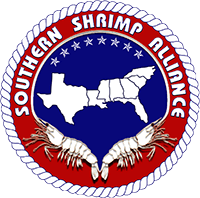According to the US Department of Agriculture (USDA), the Department of Commerce (DOC) and the Food and Drug Administration (FDA), the disease responsible for causing massive, widespread mortalities on shrimp farms in China, Malaysia, Thailand and Vietnam does not pose a threat to human health, US wild shrimp stocks or shrimp farms in the US.
Each of the three agencies also assured SSA that a number of federal agencies are collaborating and continuing to closely monitor and study the situation in order to protect against any possible threats to the US. These statements were made in separate responses to an April 24, 2013, letter sent by Southern Shrimp Alliance Executive Director John Williams to USDA Secretary Vilisak, DOC Acting Secretary Blank and FDA Administrator Hamburg,
https://shrimpalliance.com/wp-content/uploads/2013/07/SSA-ltr-to-USDA-DOC-FDA-final-4-24-13.pdf
https://shrimpalliance.com/wp-content/uploads/2013/07/USDALetter-EMS.pdf
https://shrimpalliance.com/wp-content/uploads/2013/07/DOCletter-EMS.pdf
https://shrimpalliance.com/wp-content/uploads/2013/07/FDA-response-on-EMS1.pdf
In his letter, Mr. Williams noted that the shrimp fishery is the most valuable in the Gulf region and that the culture and economy of many coastal communities depend on the health of this fishery and wild shrimp resources. Consequently, SSA’s membership was becoming increasingly alarmed by reports of massive shrimp mortalities on foreign shrimp farms due to an infectious disease described as ‘early mortality syndrome’ (EMS) about which little was known. Mr. Williams raised three primary questions to the federal agencies that were of legitimate concern to US shrimp consumers and producers:
1) What is known about the potential adverse implications for human health from the consumption of raw or cooked shrimp infected with the microbe causing EMS ?
2) What is known about the potential for microbe causing EMS to be released into the marine or estuarine environments, and what are the potential adverse implications for wild shrimp resources and the ecosystem on which they depend?
3) What is known about the potential for the microbe causing EMS to spread to US shrimp farms and what are the potential adverse implications for US shrimp farm production?
Indeed, USDA Secretary Vilsack echoed Mr. Williams’ concerns in his reply stating, “I recognize the importance of shrimp production and resources to the United States and America’s Gulf region in particular. The U.S. Department of Agriculture (USDA) is aware of the impact that a disease such as EMS could have if it were to become established in the United States.”
However, each of the replies from the three federal agencies cited the work of Arizona State University’s Dr. Donald Lightner in reaching their conclusions that the disease is not a danger to human health, wild shrimp stocks or US shrimp farming operations. Dr. Lightner is often identified as the world’s leading expert on shrimp diseases and recently reported that he had identified the cause of EMS as a strain of bacteria, Vibrio parahaemolyticus. He and six colleagues recently published their peer-reviewed findings in the journal “Diseases of Aquatic Organisms 105:45-55, 2013”. http://www.shrimpnews.com/PDFsFolder/USAazLightnerAHPNSPaper.pdf
Citing Dr. Lightner’s work, FDA’s Deputy Commissioner for Foods and Veterinary Medicine, Michael Taylor stated in his reply to SSA that “the most current research indicates that EMS poses no human food safety risk. Vibrio parahaemolyticus has recently been determined as the bacterium responsible for EMS, and while some strains of the bacterium do cause gastrointestinal illness in humans, the strain found to cause EMS is not one of them.”
With respect to the risk of infection and mortality of wild shrimp stocks in the US, both the USDA and DOC Acting Secretary Blank confirmed to SSA that Vibrio parahaemolyticus is already commonly found in brackish coastal waters around the world and, citing Dr. Lightner’s work, that it appears this bacterium is killed by freezing thus dramatically reducing the possibility of transmission to the US from frozen shrimp products that dominate US shrimp imports. Acting Secretary Blank described the risk to US wild shrimp as “negligible”.
All three agencies also strongly downplayed the risk of EMS transmission to US shrimp farms especially if those farms follow well known best management practices. Still, since receiving these responses from the three federal agencies, there have been numerous reports of a disease causing widespread mortality on shrimp farms in Mexico despite that country implementing shrimp import restrictions designed to prevent EMS transmission from Asian sources. http://www.undercurrentnews.com/2013/06/17/fears-over-ems-type-disease-in-mexico/
These reports suggest that it is not yet known for certain whether some form of EMS is responsible for this outbreak, but that this is the subject of intensive research including by Dr. Lightner. Indeed, according to Acting Secretary Blank’s letter, “anywhere giant tiger prawn and whiteleg shrimp are cultivated is potentially at risk” of an EMS infection.
